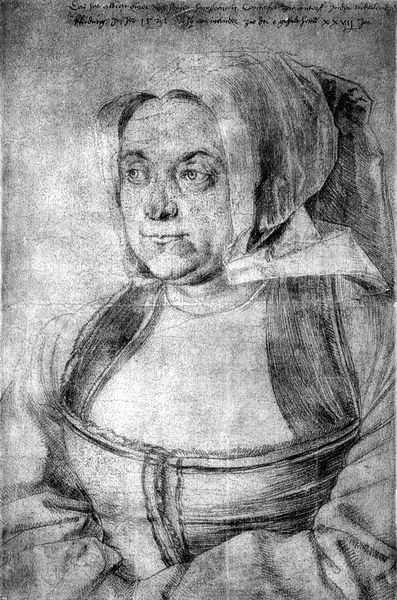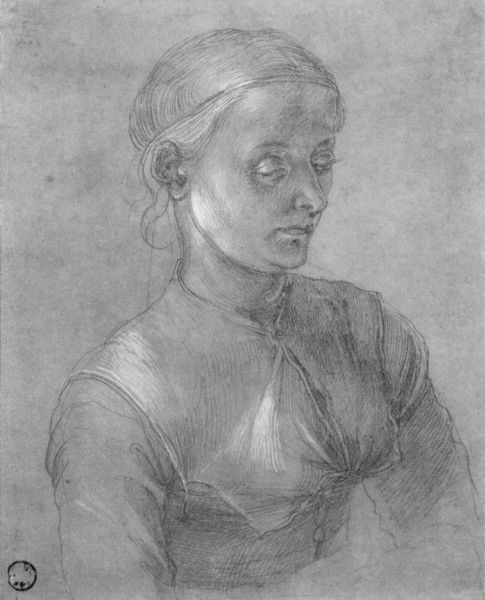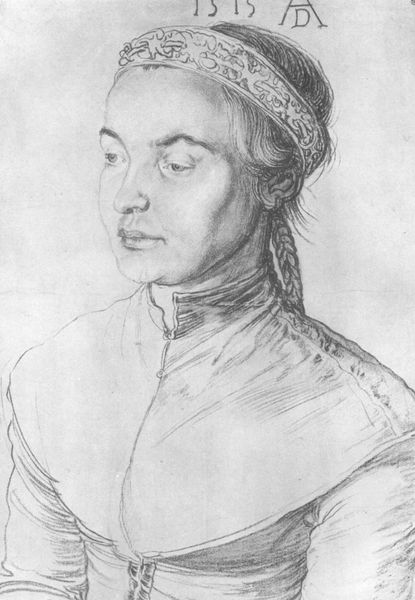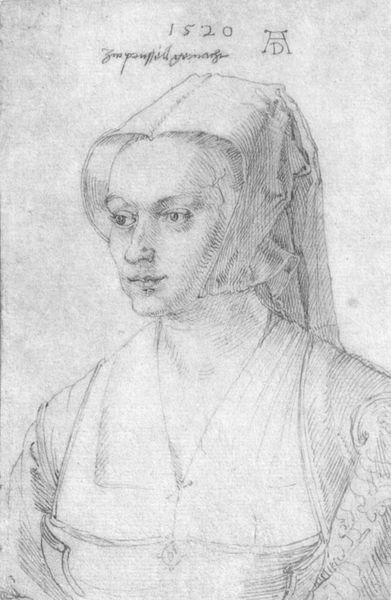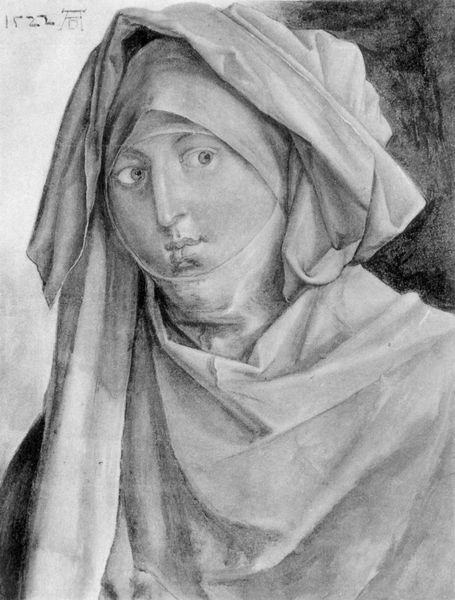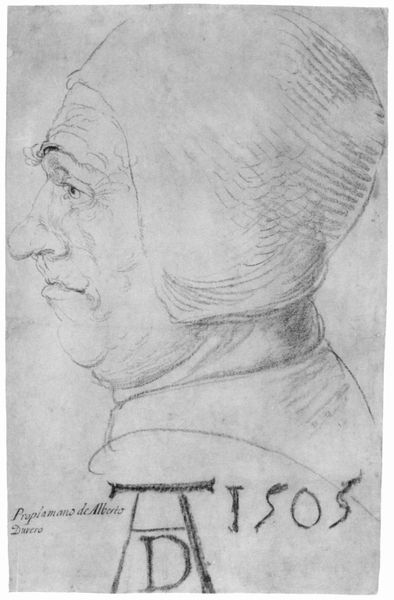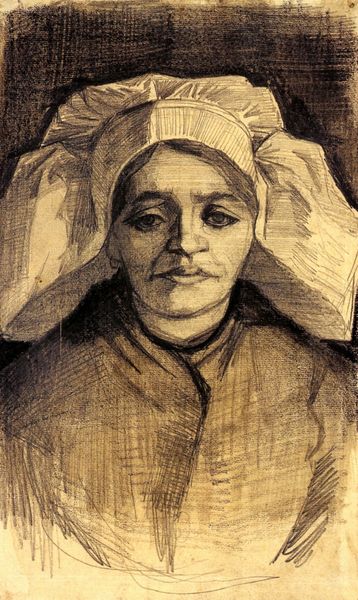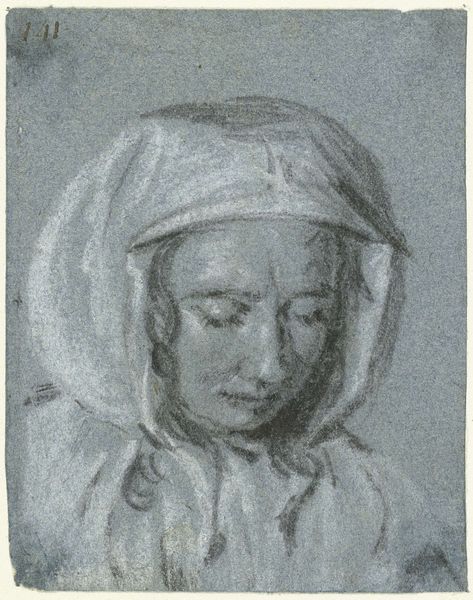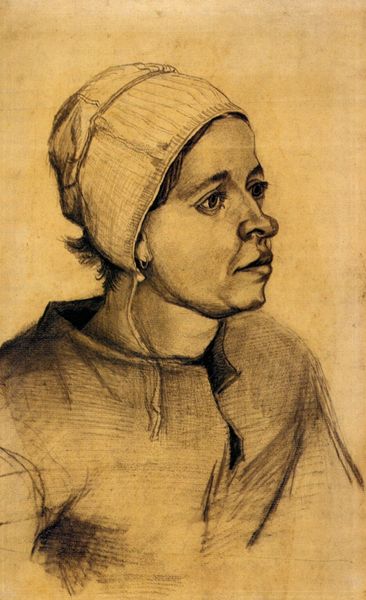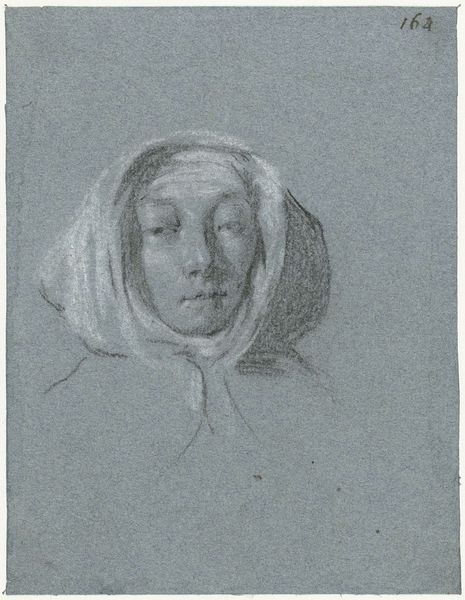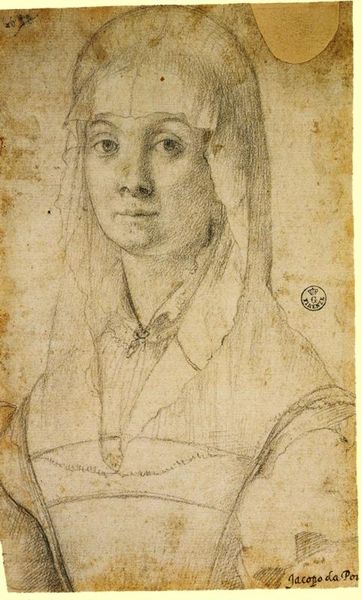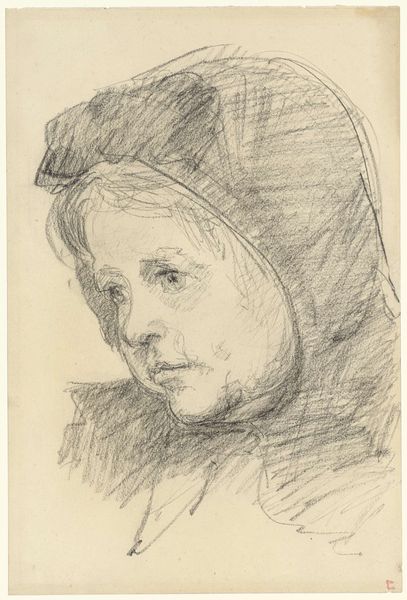
drawing, pencil
#
portrait
#
drawing
#
facial expression drawing
#
self-portrait
#
head
#
face
#
portrait image
#
portrait reference
#
sketch
#
pencil
#
animal drawing portrait
#
nose
#
portrait drawing
#
facial study
#
facial portrait
#
northern-renaissance
#
forehead
#
portrait art
#
female-portraits
#
fine art portrait
#
digital portrait
Copyright: Public domain
Editor: This is Albrecht Dürer's "Portrait of a Woman (Creszentia Pirckheimer)" from 1503, done in pencil. It's striking how modern it feels. The subject's gaze is averted, almost shy. What do you see in this piece? Curator: The averted gaze and the stark, almost clinical use of line certainly speak to a kind of vulnerability, don't they? Yet, it's the precise detail that fascinates me. The Northern Renaissance was obsessed with accurate representation, but Dürer elevates this beyond mere observation. Look at the symbolism of the head covering – it signals modesty, perhaps even a specific religious conviction common in his time. Does the fact that she isn't gazing out at the viewer amplify her inner emotional world? Editor: That’s interesting. So the headdress isn’t just a fashion statement, it’s a symbolic representation of her identity? Curator: Precisely. Clothes become potent carriers of meaning, especially in portraiture. Consider also the lack of ornamentation; the emphasis falls solely on the face. We are invited to examine her humanity without distraction. Doesn't this resonate with certain contemporary portraits that also strip away artifice to expose raw emotion? Editor: It really does. And thinking about how this image would have been viewed then, without all the portraits we see today... Curator: It would have been a much rarer and potent thing, wouldn't it? A preserved image carried significance, an artifact invested with memory and legacy. Do you think knowing the identity of the sitter influences your reading? Editor: Definitely. Knowing it's Creszentia Pirckheimer, and perhaps understanding her social standing at the time, gives the piece another layer of meaning. I’m seeing so much more here now. Curator: Indeed. Visual symbols and social context work hand in hand, adding dimensions to the artist’s skill. Images connect us to the past, revealing what mattered to people, and reflecting a range of human emotions that continue to echo across time.
Comments
No comments
Be the first to comment and join the conversation on the ultimate creative platform.
